| HOME |
|---|
PISCIS AUSTRALIS
The Southern Fish
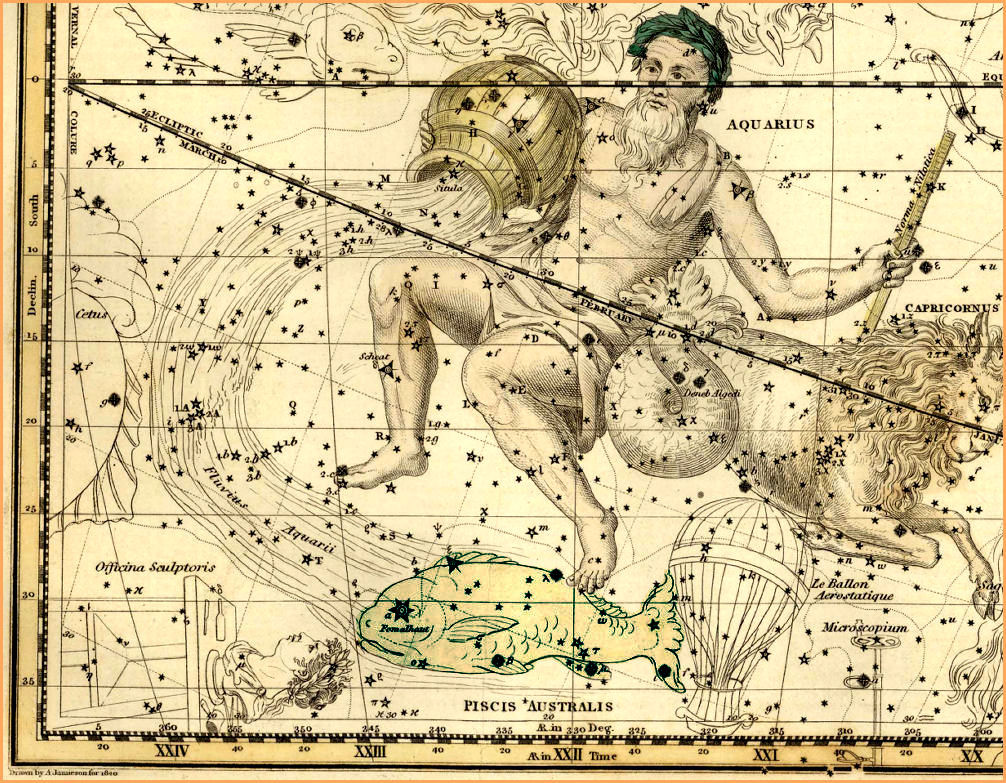
Piscis Australis - Celestial Atlas by Alexander Jamieson - 1822
| HOME |
|---|

Piscis Australis (also spelled Piscis Austrinus) is linked to the constellation Aquarius, in that the stream of water pouring from the jar of Aquarius traditionally ends in the fish's mouth. It is an image that goes back 2,000 years, included in Ptolemy's original 48 constellations of 149 AD.
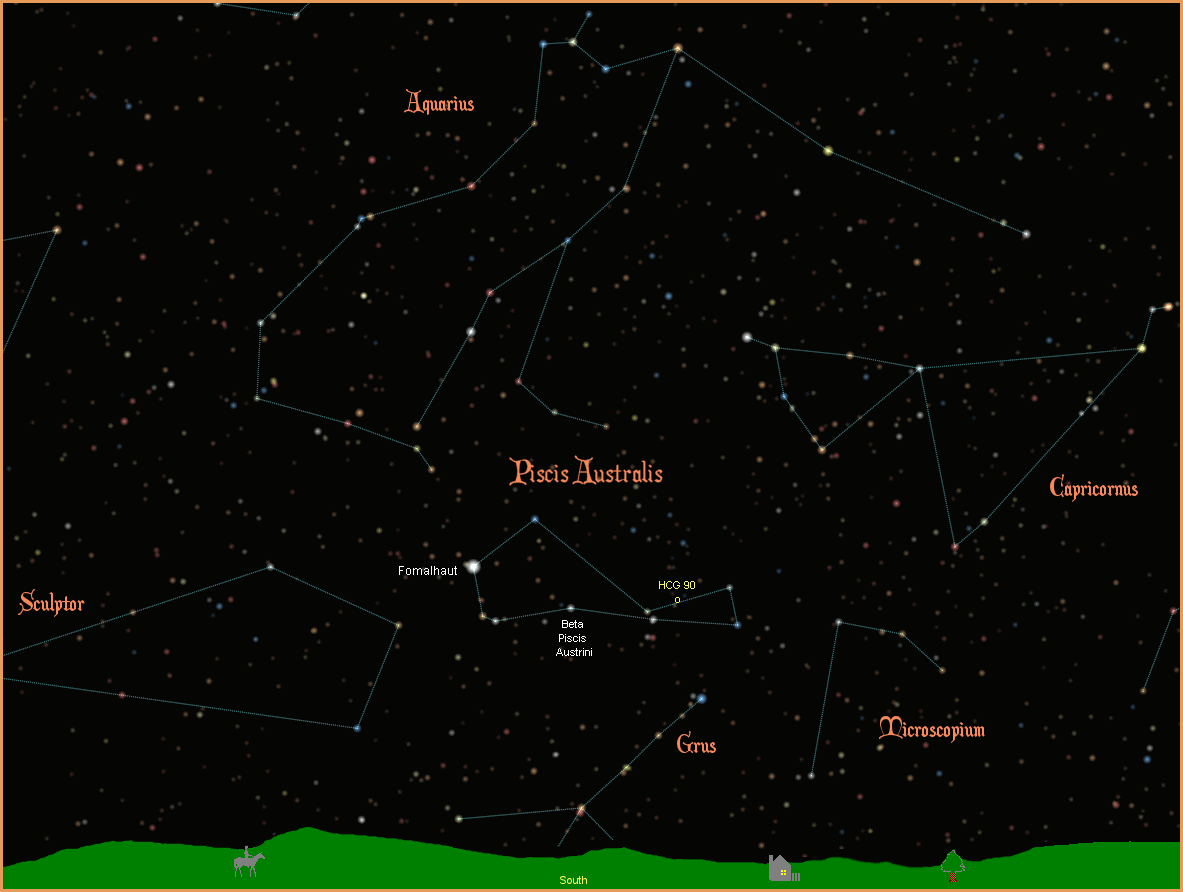
The main attraction of Piscis Australis is its very bright alpha star, Fomalhaut, from the Arabic "Fum al Hut," mouth of the fish. With a magnitude of 1.17, it is the eighteenth brightest star in the sky, and far outshines all the other stars in the area, causing it to be called "The Solitary One", and making it a good signpost for all the relatively dim constellations that surround it in that part of the sky.
The most exciting aspect of Fomalhaut is that it appears to support a planetary system. It certainly supports a ring of dust and debris that qualifies as a protoplanetary disc, and there is definitely something inside that disc, maybe more than one thing. NASA is convinced we have at least one planet on our hands named Fomalhaut b, and quite possibly more. The Hubble image below with the star in the center masked out, clearly shows the protoplanetary disc around Fomalhaut and what is heralded by NASA as "the first visible-light snapshot of a planet circling another star."
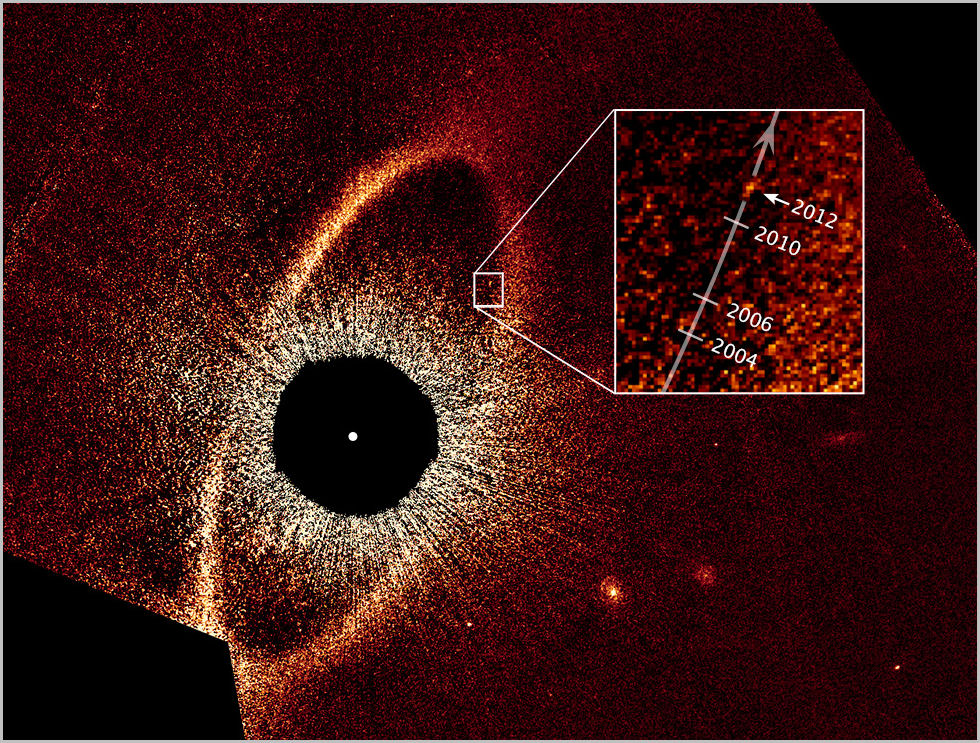
The fact that all this is happening only 25 light years away - right next door in astronomical terms - gives it significant import. The star at the centre of it all is an A4V white main sequence star with two very dim, very far away stellar companions, technically making Fomalhaut a triple star system, although the stars would take many millions of years to orbit each other. The NASA art below gives us a good idea of what the planet Fomalhaut might look like as it plows through the dusty chaos of the star's protoplanetary disc.
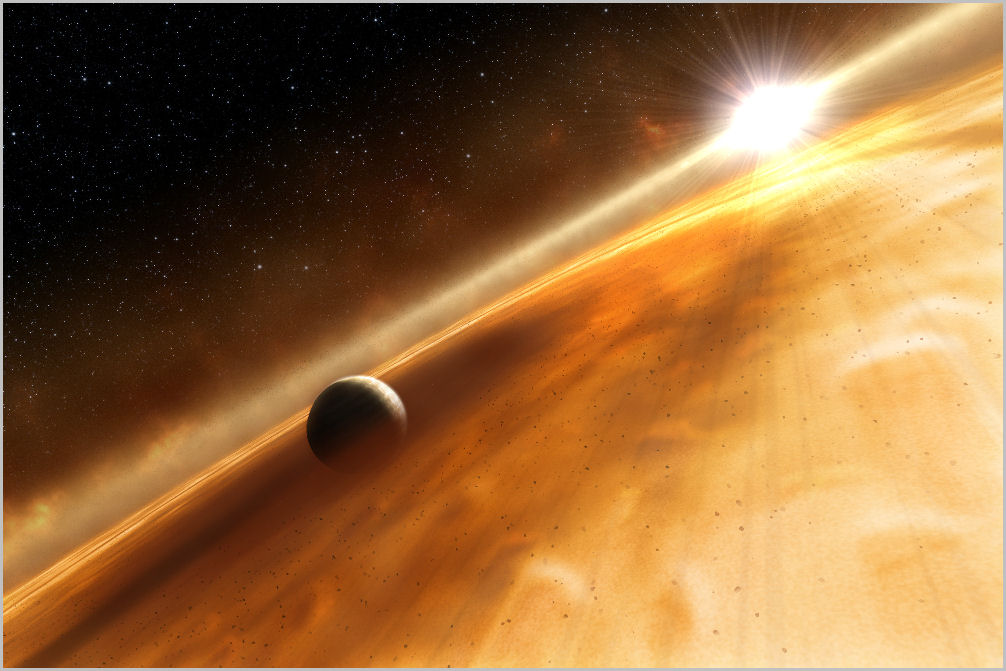
Beta Piscis Austrini is an unremarkable, unnamed star in the belly of the fish. Classified as an A1III white giant, with a magnitude of 4.29, it is about 143 light years away.
In addition to Fomalhaut there are three more stars in the constellation with confirmed planets, one hosting at least a two planet system, but the stars are all beyond visual range and the planets are all gas giants. For more information on these and other extrasolar planets, visit NASA's New Worlds Atlas, and The Open Exoplanets Catalogue.
Piscis Australis doesn't have much to offer in the deep sky department, but the Hubble Space Telescope did manage to capture a portrait of three interacting galaxies about 100 million light years away. Collectively referred to as the Hickson Compact Group 90 (HCG 90), they are elliptical galaxy NGC 7173 in the upper left of the image, another elliptical galaxy NGC 7176 in the lower right, and in between, what's left of spiral galaxy NGC 7174, as it's torn apart and devoured by the two larger ellipticals.
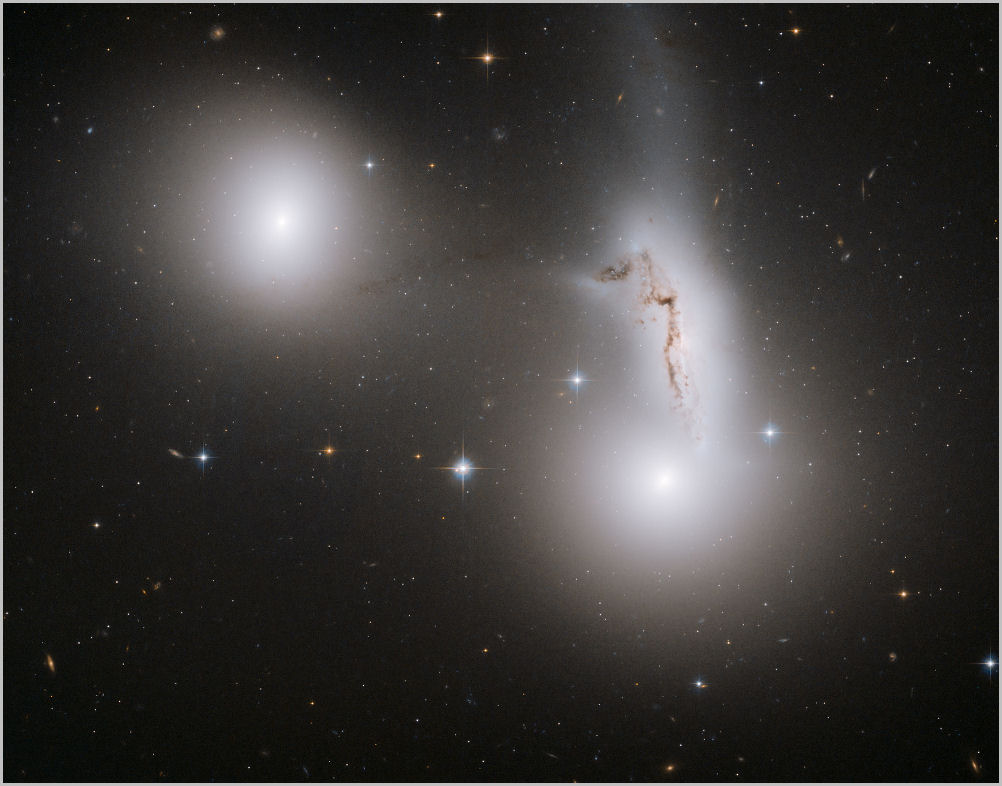
|
|
|
|
|
|